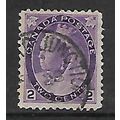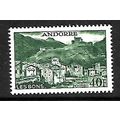Toulouse Lautrec, Henri de - Loiie Fuller - art postcard
- Condition : Used
- Dispatch : 2 Days
- Brand : None
- ID# : 74746882
- Quantity : 1 item
- Views : 381
- Location : United Kingdom

- Seller : justthebook (+1703)
- Barcode : None
- Start : Sat 08 Sep 2012 05:30:45 (EDT)
- Close : Run Until Sold
- Remain : Run Until Sold
Checks/Cheques
 for 1 item(s) edit
for 1 item(s) edit
Shipping Calculator
More Listings from This Seller view all
Seller's Description
- Art Postcard
- Work of art title: Loiie Fuller, 1892
- Artist (if known): Henri de Loulouse Lautrec
- Media or other details: painting
- Publisher / Gallery: Magna Books
- Postally used: no
- Stamp & postmark details (if relevant): na
- Size: modern
- Notes & condition details:
NOTES:
Size: 'Modern' is usually around 6in x 4in / 'Old Standard' is usually around 5 1/2in x 3 1/2in. Larger sizes mentioned, but if you need to know the exact size please ask.
All postcards are not totally new and are pre-owned. It's inevitable that older cards may show signs of ageing and use, particularly sent through the post. Any faults other than normal ageing are noted.
Stock No.: A404
------------------------------------------------
Postage & Packing:
UK (incl. IOM, CI & BFPO): 99p
Europe: GBP 1.60
Rest of world (inc. USA etc): GBP 2.75
No additional charges for more than one postcard. You can buy as many postcards from me as you like and you will just pay the fee above once. (If buying postcards with other things such as books, please contact or wait for invoice before paying).
Payment Methods:
UK - PayPal, Cheque (from UK bank) or postal order
Outside UK: PayPal only please (unless otherwise indicated). NO non-UK currency checks or money orders (sorry).
NOTE: All postcards are sent in brand new stiffened envelopes which I have bought for the task. These are specially made to protect postcards and you may be able to re-use them. In addition there are other costs to sending so the above charge is not just for the stamp!
----------------------------------------------
Text from the free encyclopedia WIKIPEDIA may appear below to give a little background information:
*************
Henri Marie Raymond de Toulouse-Lautrec-Monfa or simply Henri de Toulouse-Lautrec (French pronunciation: [?~?i d? tuluz lo't??k]; 24 November 1864 � 9 September 1901) was a French painter, printmaker, draughtsman, and illustrator, whose immersion in the colourful and theatrical life of Paris in the late 1800s yielded a collection of exciting, elegant and provocative images of the modern and sometimes decadent life of those times. Toulouse-Lautrec is known along with C�zanne, Van Gogh, and Gauguin as one of the greatest painters of the Post-Impressionist period. In a 2005 auction at Christie's auction house a new record was set when La blanchisseuse, an early painting of a young laundress, sold for $22.4 million U.S
....
Toulouse-Lautrec was drawn to Montmartre, the area of Paris famous for its bohemian lifestyle and the haunt of artists, writers, and philosophers. Studying with Bonnat placed Henri in the heart of Montmartre, an area he rarely left over the next 20 years. After Bonnat took a new job, Henri moved to the studio of Fernand Cormon in 1882 and studied for a further five years and established the group of friends he kept for the rest of his life. At this time he met �mile Bernard and Van Gogh. Cormon, whose instruction was more relaxed than Bonnat's, allowed his pupils to roam Paris, looking for subjects to paint. In this period Toulouse-Lautrec had his first encounter with a prostitute (reputedly sponsored by his friends), which led him to paint his first painting of prostitutes in Montmartre, a woman rumoured to be called Marie-Charlotte.[2]
With his studies finished, in 1887 he participated in an exposition in Toulouse using the pseudonym ""Tr�clau"", an anagram of the family name 'Lautrec'. He later exhibited in Paris with Van Gogh and Louis Anquetin.[2] The Belgian critic Octave Maus invited him to present eleven pieces at the Vingt (the Twenties) exhibition in Brussels in February. Vincent van Gogh's brother, Theo bought 'Poudre de Riz' (Rice Powder) for 150 francs for the Goupil & Cie gallery.
From 1889 until 1894, Henri took part in the ""Independent Artists' Salon"" on a regular basis. He made several landscapes of Montmartre. At this time the 'Moulin Rouge' opened.[2] Tucked deep into Montmartre was the garden of Monsieur Pere Foret, where Toulouse-Lautrec executed a series of pleasant plein-air paintings of Carmen Gaudin, the same red-head model who appears in The Laundress (1888). When the Moulin Rouge cabaret opened, Toulouse-Lautrec was commissioned to produce a series of posters. His mother had left Paris, and while Henri had a regular income from his family, making posters offered him a living of his own. Other artists looked down on the work, but Henri was so aristocratic he did not care.[10] The cabaret reserved a seat for him, and displayed his paintings.[11] Among the well-known works that he painted for the Moulin Rouge and other Parisian nightclubs are depictions of the singer Yvette Guilbert; the dancer Louise Weber, known as the outrageous La Goulue (""The Glutton""), who created the ""French Can-Can""; and the much more subtle dancer Jane Avril.
Loie Fuller [also Lo�e Fuller] (January 15, 1862 � January 1, 1928) was a pioneer of both modern dance and theatrical lighting techniques.
Born Marie Louise Fuller in the Chicago suburb of Fullersburg, now Hinsdale, Illinois, Fuller began her theatrical career as a professional child actress and later choreographed and performed dances in burlesque (as a skirt dancer), vaudeville, and circus shows. An early free dance practitioner, Fuller developed her own natural movement and improvisation techniques. Fuller combined her choreography with silk costumes illuminated by multi-coloured lighting of her own design.
Although Fuller became famous in America through works such as Serpentine Dance (1891), she felt that she was not taken seriously by the public who still thought of her as an actress. Her warm reception in Paris during a European tour persuaded Fuller to remain in France and continue her work. A regular performer at the Folies Berg�re with works such as Fire Dance, Fuller became the embodiment of the Art Nouveau movement. An 1896 film of the Serpentine Dance by the pioneering film-makers Auguste and Louis Lumi�re gives a hint of what her performance was like. (The unknown dancer in the film is often mistakenly identified as Fuller herself.)
Fuller's pioneering work attracted the attention, respect, and friendship of many French artists and scientists, including Jules Ch�ret, Henri de Toulouse-Lautrec, Fran�ois-Raoul Larche, Henri-Pierre Roch�, Auguste Rodin, Franz von Stuck, Maurice Denis, Thomas Theodor Heine, Koloman Moser, St�phane Mallarm�, and Marie Curie. Fuller held many patents related to stage lighting including chemical compounds for creating color gel and the use of chemical salts for luminescent lighting and garments (stage costumes US Patent 518347). Fuller was also a member of the French Astronomical Society.
Loie Fuller's original stage name was ""Louie"". In modern French ""L'ou�e"" is the word for a sense of hearing. When Fuller reached Paris she gained a nickname which was a pun on ""Louie""/""L'ou�e"". She was renamed ""Lo�e"" - this nickname is a corruption of the early or Medieval French ""L'o�e"", a precursor to ""L'ou�e"", which means ""receptiveness"" or ""understanding"".
Fuller formed a close friendship with Queen Marie of Romania; their extensive correspondence has been published. Fuller, through a connection at the U.S. embassy in Paris played a role in arranging a U.S. loan for Romania during World War I. Later, during the period when the future Carol II of Romania was alienated from the Romanian royal family and living in Paris with his mistress Magda Lupescu, she befriended them; they were unaware of her connection to Carol's mother Marie. Fuller initially advocated to Marie on behalf of the couple, but later schemed unsuccessfully with Marie to separate Carol from Lupescu.[1] With Queen Marie and American businessman Samuel Hill, Fuller helped found the Maryhill Museum of Art in rural Washington State, which has permanent exhibits about her career.
Fuller occasionally returned to America to stage performances by her students, the ""Fullerets"" or Muses, but spent the end of her life in Paris where she died of pneumonia on January 1, 1928 at age 65. She was cremated and her ashes are interred in the columbarium at P�re Lachaise Cemetery in Paris. Her sister, Mollie Fuller, had a long career as an actress and vaudeville performer.[2]
type=printed postcards
theme=artists signed
sub-theme=art
number of items=single
period=1945 - present
postage condition=unposted
Listing Information
| Listing Type | Gallery Listing |
| Listing ID# | 74746882 |
| Start Time | Sat 08 Sep 2012 05:30:45 (EDT) |
| Close Time | Run Until Sold |
| Starting Bid | Fixed Price (no bidding) |
| Item Condition | Used |
| Bids | 0 |
| Views | 381 |
| Dispatch Time | 2 Days |
| Quantity | 1 |
| Location | United Kingdom |
| Auto Extend | No |





















